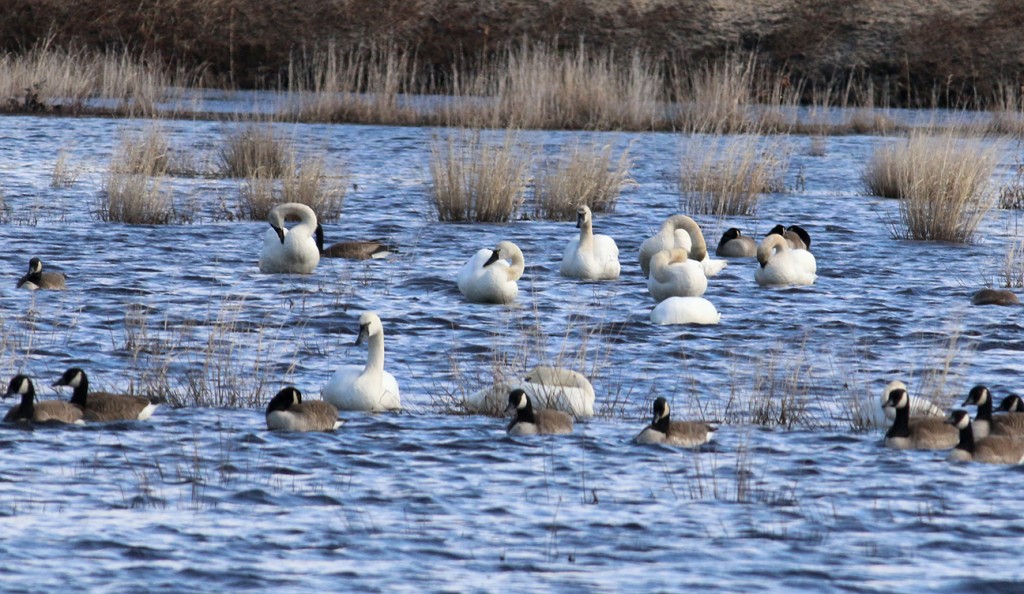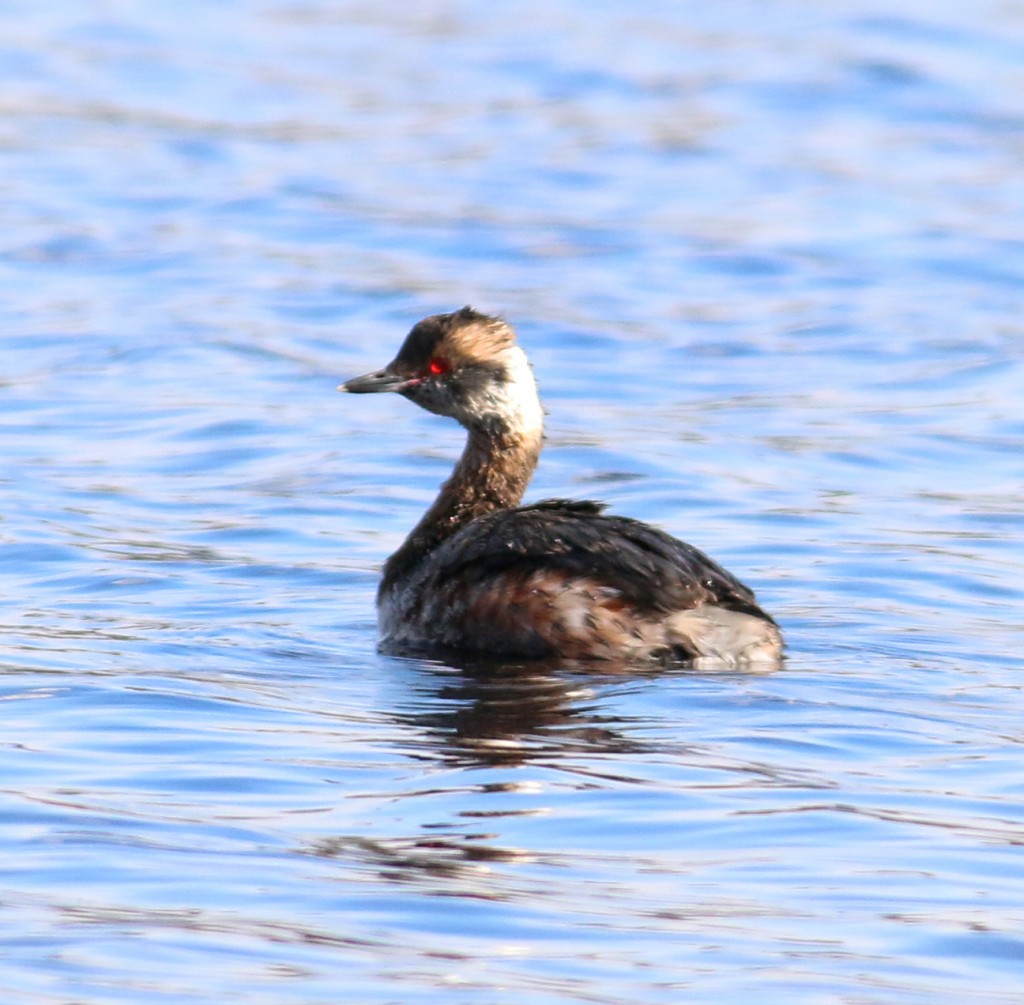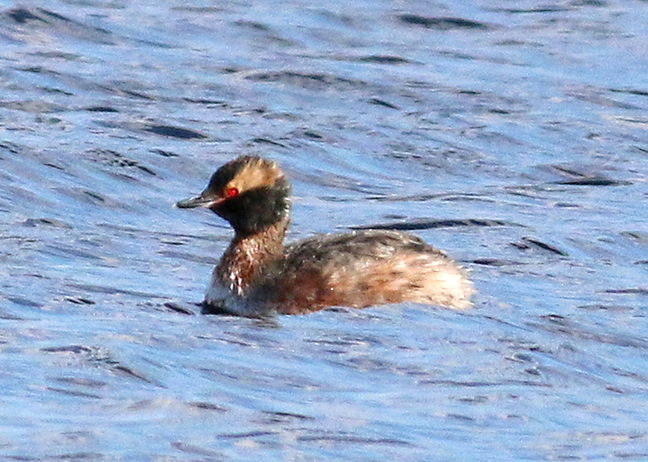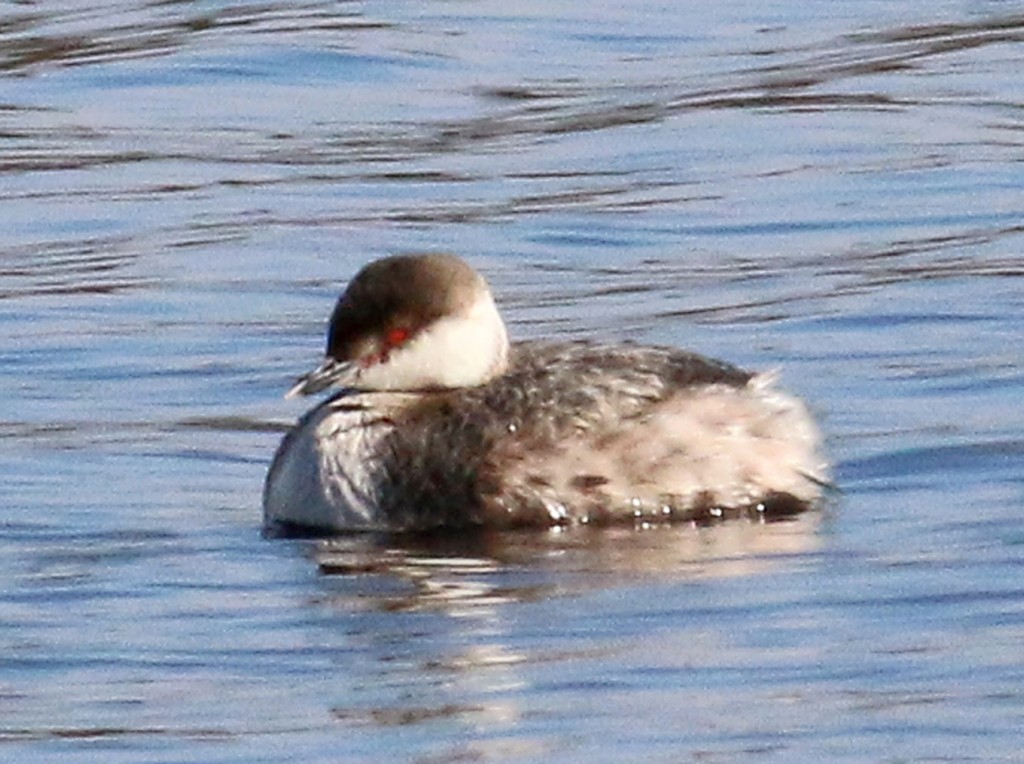The temperatures were finally up in the high 50’s today, but the winds were over 20 mph. One thing I’ve learned over the years is that there is nothing that will cause a slow birding day quite like high winds. Birds (and birders) will tolerate low temperatures, high temperatures, and drizzle, but not high winds. So I tried to get something positive out of the day by exploring what condition the roads were in at Whitesbog and to see if the Tundra Swans have returned to the thawed bogs. Indeed, I was happy to see 56 Tundra Swans mixed in with the Canada Geese.
 As I walked around the bogs, I was happy to find a few new first-of-year species. First there was a Pied-billed Grebe…nice. Then nine Tree Swallows…nice. Then there was a grebe with lots of yellow on its face. WHOA! What was that?
As I walked around the bogs, I was happy to find a few new first-of-year species. First there was a Pied-billed Grebe…nice. Then nine Tree Swallows…nice. Then there was a grebe with lots of yellow on its face. WHOA! What was that?
A quick look through the scope confirmed that it was a Horned Grebe, a species that I have never seen at this location. Then another one appeared, although this time in more typical winter plumage.
Then yet another was spotted along the shoreline, this time transitioning into breeding plumage, with a little white remaining on the cheek and throat, and especially on the back of the neck.

As if seeing side-by-side breeding and winter plumaged birds wasn’t enough, this third bird was beginning the transition into breeding plumage, making a great three-bird comparison.
I spent close to an hour watching these three birds feeding in the pool in front of me, with the full range of plumage side-by-side.
For the record, Horned Grebes are fairly common along the immediate coast in winter, both in the ocean and in Barnegat Bay, but Whitesbog is 22 miles from the ocean, and that makes a big difference. After asking others who have more experience birding in Whitesbog and checking eBird records, it turns out that it is quite uncommon to find Horned Grebe inland here in NJ. There are no previous eBird records for Horned Grebe in Whitesbog. Until today. Not bad for a windy day.

